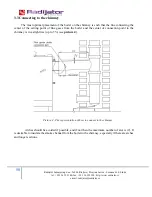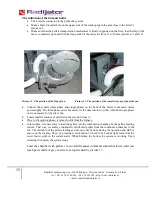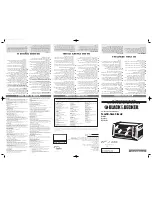
55
Radijator Inženjering d.o.o, 36000 Kraljevo, Živojina Lazića - Solunca br.6, Srbija
tel. +381 36 399 140, fax. +381 36 399 150, http://www.radijator.rs
Basic requirements that must be met during installation are:
When installing the boiler, pay attention to its side distance and rear distance from possible obstacles.
In this way, the access point is created to clean ash from the boiler or even dismantle the assembly of the
mechanism for transporting pellets. More details in section 3.2.
The boiler can be connected to an open central heating system, but to a closed central heating system as
well. In case of the connection to a closed system, it is recommended to install the valve for thermal leakage
protection, which is determined by the relevant laws of each country in which the boiler is connected. In this
series of boilers, thermal safety valves with direct injection of cold water into the boiler should be used. There
are appropriate sockets for mounting these valves on the boiler itself.
In the boiler room, where the boiler is installed, if there are frequent power outages use
additional safety measures and measures to protect the boiler while operating. If there are parts of the
installation that are "submerged", that is, they are at a lower level than the boiler and some heating
bodies, then the open heating system is recommended.
The boiler has to be located at a safe distance from easily flammable materials.
The power supply of the boiler is 3x380V (except for TKAN 80) and 50Hz and the connection of all
devices that the boiler contains should be done according to the valid regulations and the connection is made
by a person with the appropriate authorization.
The connection to the chimney is also conducted according to the binding regulations the manufacturer's
recommendations as well as, which can be seen in the following text.
3.2 Boiler room
The boiler room must be secured against freezing.
The boiler base in the boiler room has to be made of inflammable material. Recommended
distances of all four sides of the boiler in relation to the walls of the boiler room or some other rigid
bodies (storage boiler, etc.) are shown in
picture 3
.
These distance values allow safe access when firing, enough space for cleaning, and free access
to the fan, pellet transport mechanism, electric ignition heater, and charging and discharging valve.
The boiler on its side opposite the silo should be distanced from the wall 500 to 600mm and only
when there is a semi-automatic cleaning of the furnace. That space is needed for handling the ash
dump
If the boiler does not have semi-automatic ash cleaning, then, it is enough to be 100mm away
from the wall. On the silo side, the boiler should be 400 mm to 900 mm away from the wall (measured
from silos) depending on the power of the boiler. These measures are given below in the table for
each power. This room is needed in case of any major interventions on the pellet transport mechanism,
that is, in a situation where it needs to be dismantled from the boiler. The space at the back of the
boiler should allow easy access to the chimney and ash cleaning holes on it. From the front side of
the boiler, it is required to ensure easy opening of all doors and eventually allow the installation of
pneumatic cleaning.
















































